After leaving the reed village, we steamed for another 3 hours on Lake Titicaca. The sky was full of sun and the breeze from the stern of the boat, where we sat taking in the view, was refreshing.
Paul befriended an elderly Irishman and together they sat chatting about Irish tourism, politics and travel as we powered along the 40 km expanse to Amantani, Lake Titicaca’s largest island.
Lake Titicaca is the world’s highest navigable lake. It sits at 3,810 metres (12, 500 feet) above sea level in the Andes Mountains of South America, astride the boarder between Peru to the west and Bolivia to the east.
Titicaca is the second largest lake of South America. It covers some 8,300 square km (3,200 square miles) and extends northwest-to-southeast for a distance of 190 km (120 miles). It is 80 km (50 miles) across at its widest point! When stood on land, looking out across the lake, it is hard to fathom this massive body of water is simply a lake!
We arrived mid afternoon and were greeted on the shores of Amantani Island by a throng of local men and women.
As though we were lined up in an elementary school gym being picked for team sports, we stood waiting for our guide to assign us to a local host.
Local women, young and old alike, stood quietly, hands folded in front of them, all smiling. Some with brilliant white teeth, some capped on the edges with shining metal (silver & gold in colour).
Each woman wore a vibrant red skirt, knee length, pleated at the hips emphasizing the waistline. As the women moved you could barely catch glimpses of underskirts, neon in colour, green, orange and pink.
Each waist was bound in bands of hand woven fabric, covering the mid drift; lily white with delicate stripes of turquoise, aqua and teal.
A heavy broadcloth shirt, ornately embroidered with more colour, was tidily tucked inside the waist. Buttonless, it opened in the front to show a darker, cotton shirt underneath.
Atop each head was a heavy, broad, black cloth that ran across the forehead and was draped behind the shoulders. It fell along the buttock of the ladies with colourful hand stitched floral designs clinging to the bottom third of the fabric, it’s ends gently meeting the hem of each skirt.
With broad smiles and the slightest handshake, our host, Beatrice (my grandmother Healey’s name), gestured for us to follow her. Two other ladies, both South Africans, were assigned to Beatrice, and so the four of us, began our slow ascent to Beatrice’s home.
The South African ladies, had only arrived in Puno the day before and had not yet acclimated to the altitude. If we had been at sea level, the incline to Beatrice’s would have been a struggle. Slowly and steady, with measured pace, we climbed the path toward our homestay.
At one point, Beatrice stopped in the shade of a house, sat on the ground and rested her back against the house’s foundation. Feet cocked up on a mound and skirt tucked around her, I was both surprised and delighted with her relaxed demeanour.
When everyone was ready, Beatrice popped up again and started trudging onward and upward. Both youthful and fit in her movement, she moved along effortlessly, maintaining a watchful eye on her keep.
With limited English, some gesturing and gesticulations, she informed us her house was not much further.
To be fair, we had already deduced that; the summit of the island was in sight...unless we were going upward and over, we had to be close by!
By the time we arrived, one of the South Africans were just about ready to collapse. I felt her pain; it was how I felt hiking parts of the Inca Trail. Deep breaths we suggested, deep breaths. We offered all sorts of advice, both emotional and medical. It wasn’t for another several hours did we learn she was a doctor and was quite confident she would survive despite her struggle...but you gotta think, God love her for indulging our encouragement and medical advice!
Beatrice’s home was perfect! It was a two story dwelling with bedrooms and a kitchen; all rooms, a single entity opening up onto a courtyard below. There was a sit toilet (as opposed to a squat toilet) just outside the courtyard. Toilet paper was unexpectedly provided and a bucket was used to draw water to flush. Heaven!
Our room overlooked the entire side of Amantani Island and Lake Titicaca beyond. There was a small school in the backyard and the property was fenced with chicken wire to keep the goats and chickens in.
The kitchen was on the lower level; a small room with a iron stove on a ceramic hearth. A stack of egg carton flats sat in a corner with a crocheted doily neatly arranged on top; the perfect chair for the small statured men and their children.
Abreast a long table with bench stools, we ate vegetarian meals that consisted of a plethora of carbs; rice, quinoa, 4 varieties of potatoes, pancakes and more.
All meals were served with quinoa soup, lightly garnished with carrot slivers and heaps of oregano.
Though grateful for every morsel cooked, I was amazed at the carb rich diet. We didn’t see a single portion of protein during out entire stay. I wondered how these people stayed so strong and looked so healthy.
During our meals the men in the family (presumably Beatrice’s grown brothers) came and went. The patriarch generally hung around and tried to communicate with us at the table while the mother (Beatrice’s mom) sat on the floor near the hearth feeding an 18 month old hopped up on smarties that the South Africans offered as part of a gift.
On the second floor of the house, one door led into a shop that opened up onto a basketball courtyard. The shop sold beer, chocolates and water. We were so very thankful that the basketball courtyard was directly linked to our homestay because it was here that all the “boat people” or “gringos” met with our guide in the early evening.
Here we learned about Pachamama (Mother Earth) and Pachatata (Father Earth) and their respective temples located at one of two peaks on the island.
..yes there was more altitude yet!
After our history lesson where we learned the importance of Pachamama and Pachatata to Bolivians and specifically to the people of Amantani, we set off to hike to the temple of Pachatata. A 45 minute, steady climb.
Though a few men passed along on horseback calling “taxi” with a chuckle, we declined the offer for a rustic lift and powered on.
Finally at the peak, we did as instructed in our history lesson and walked counter-clockwise around the temple three times. Holding three leaves with their pale under bellies held fast to our chest, we made private wishes for hope, love and prosperity and gently tossed our leaves inside the ancient temple.
It was freezing at the top and even more so as we watched the sun beginning to set. With daylight waining, we made haste and started the steep descent toward home.
We made it back with only an hour to spare before heading out to tonight’s festivities; a dance, complete with the gringos dressed in local, traditional dress.
Although I am always up for a good time and a huge supporter of immersing yourself in new and unfamiliar settings and cultures, I simply could not bring myself to adorn the traditional clothes of the locals.
It somehow felt like an exploitation of their good will.
I knew nothing about these people, their customs or their ways and despite their enthusiasm for dressing us, it simply felt wrong. I only wish I could have communicated my reasoning for not “dressing up”. Paul felt similarly as did Audre and Vanessa. So, off we went, each wearing the matriarch’s homemade knitted alpaca and wool hats we happily purchased shortly after we arrived.
We followed Beatrice’s father and the 18 month old to a large room beneath the basketball courtyard where local women, men and gringo alike where dressed in the traditional clothes of the islanders. Audre, Vanessa, Paul and I made an unsurprising team...we were the only gringo who did not conform to the party standard...we were the only ones not dressed in traditional clothes and I didn’t regret it one single bit.
I watched from the sidelines as the 20 somethings posed for selfies and other photos as these foreign young women twirled in unfamiliar dresses. Poncho adorned men held beers as they swayed in rhythm to the traditional music being played by a local band.
As I watched the gringo, I also watched the locals, sitting on wooden benches on the periphery of the room. They were looking into the crowd just as I was, though there was no way of telling what they thought. One thing was clear, they were watching the party; they weren’t a part of it.
I wondered if the elder ladies were happy to share a small bit of their culture in this way or were they simply performing a duty as a subsistence to their living.
I had so many questions.
After an hour or so, beat tired, our little group of four, followed “father” home, leaving the mass of twirling skirts and panchoed men to enjoy the night as they saw fit.
As we crawled into bed, we were both, equally thankful for good fortune we have in life to explore this beautiful world; to have the opportunity to observe how others live, if even for a moment.
Sometimes, exploring this world makes you uncomfortable and raises questions you didn’t even know were on the table, but isn’t this the point of travel?
In the infamous words of the late Anthony Bourdain, no truer words were spoken....
“Travel isn’t always pretty. It isn’t always comfortable. Sometimes it hurts, it even breaks your heart. But that’s okay. The journey changes you; it should change you. It leaves marks on your memory, on your consciousness, on your heart, and on your body. You take something with you. Hopefully, you leave something good behind.”

 Amantaní, Puno, Peru
Amantaní, Puno, Peru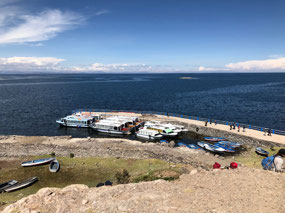

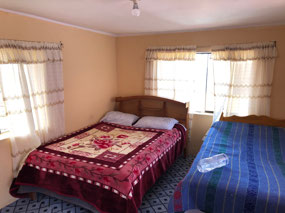
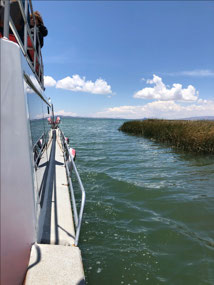
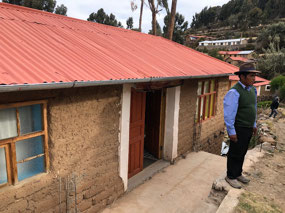
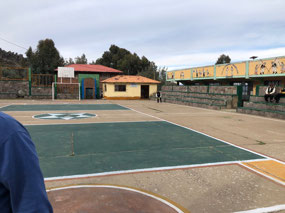
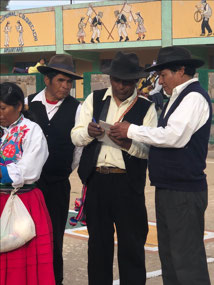
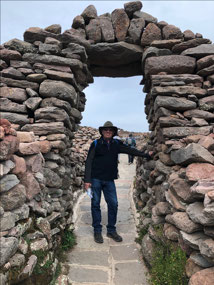





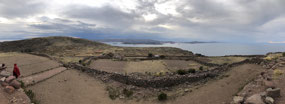
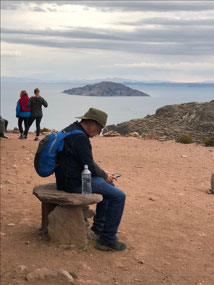
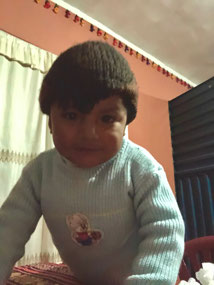
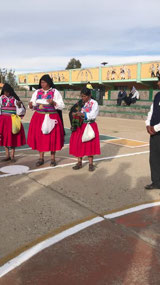
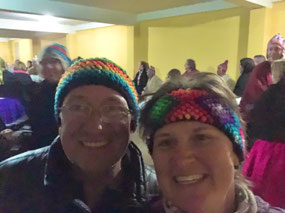
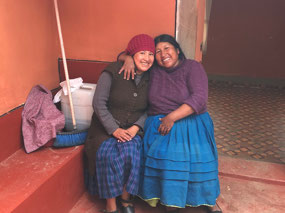
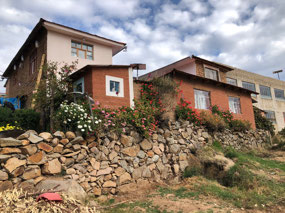
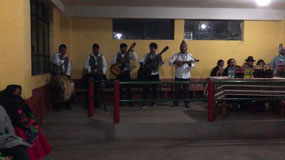
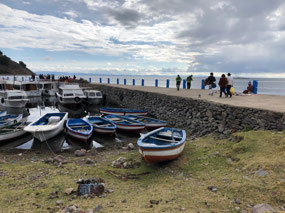
Pam Seath
2019-10-27
What experiences you are both having. I hope this amazing travel log is to become a book.
Lee Anne
2019-10-27
Absolutely beautiful! Love the quote ... so very fitting and meaningful!
Jill
2019-11-03
I’m sure you always leave something good behind.